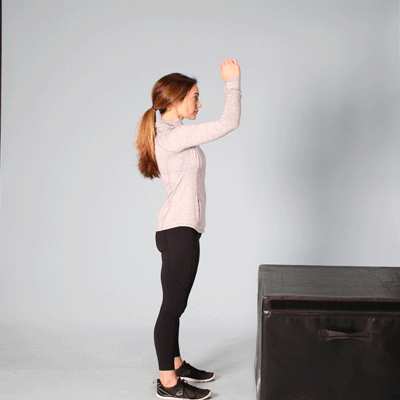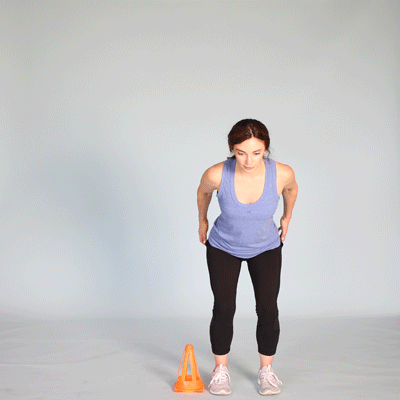The Power of Plyometrics
Plyometrics is a form of exercise that uses powerful, rapid movements to help increase speed, power, and strength.
Although people may associate plyometrics training with sports-specific athletic performance, nearly anyone can use plyometrics as a form of exercise to help improve their overall strength and power.
Athletes may also find that plyometrics training helps them improve specific functionalities for their sport. This is particularly true of sports requiring explosiveness, which is the ability to generate power quickly and in short bursts.
What is plyometrics?
Plyometrics is a form of exercise based on making quick, powerful movements. Both competitive athletes and people who train for enjoyment and general health can use plyometrics to increase their overall power.
Sports and fitness experts may describe power in exercise and movement as the ability to perform strong movements at a high rate of output or speed.
Benefits of plyometrics
Plyometric exercises help train a person’s muscles to respond with power and efficiency. The potential benefits of this training process include:
increased power output in the muscles
increased force in muscle contractions with less energy consumption
faster speed of muscle contractions or speed in general
improved ability to change directions quickly, which fitness professionals may refer to as agility or nimbleness
overall better control when stopping and starting movements
increased jumping height
decreased risk of injury to the joints and muscles
The 3 components of plyometric patterns
Plyometrics involves three phases in each cycle:
Eccentric Component: This phase of plyometrics involves the muscles storing potential energy as they get ready to perform a movement. Some people describe it as the cocking, loading, yielding, deceleration, or absorption phase. An example of this phase is when a person lowers themselves into a crouched position before making a jump.
Amortization component: During this phase, the muscles undergo dynamic stabilization. They transition from overcoming gravity and loading the energy to releasing it. The longer this phase lasts, the more potential energy gets lost. The shorter the time frame, the more powerful the releasing energy.
Concentric component: The final phase, the concentric component, involves contracting the muscles to release the stored energy. During a crouching jump, this phase occurs when the person uses their leg muscles to propel themselves off the ground and into the air.
Plyometric lower body exercises
Plyometric leg exercises often involve jumping, lunging, and other movements that focus on improving strength, power, and speed in the legs. The following are a few examples of leg exercises a person may wish to try.
Squat jump
A squat jump requires a person to get into a squat position and then perform a vertical jump. It involves these steps:
Stand with the legs about shoulder-width apart and the toes facing forward.
Crouch into a squat position, bending the knees and hips.
From the squat position, jump up as high as possible.
When coming down from the jump, land softly and return to the squat position to repeat the move.
Box jump
A box jump requires a sturdy platform, box, or stool onto which a person can jump. This move involves jumping from the floor to the elevated box. A person should follow these steps:
Place a box or another sturdy platform a few inches in front of the toes.
Crouch slightly and then jump, bending the knees so that both feet land on the box.
For more power and stability, start with the arms by the side and then swing them forward and up while jumping.
Lateral jump
This exercise involves jumping from side to side. A person can perform it as follows:
Stand in a partial squat, which is where the thighs are halfway between standing straight and being parallel to the ground.
Push off both feet and jump to the side, as though trying to jump over an object on the floor.
Land softly on both feet in a partial squat.
Perform the same move in the opposite direction.
Once they feel comfortable performing this exercise, a person can make it more challenging by starting in a partial single-leg squat. They can push off the standing leg to jump to the side, landing softly on the other foot.
Plyometric upper body exercises
Upper body plyometric exercises may be helpful for people who throw or hit balls. They can also benefit swimmers, boxers, martial artists, and others who wish to improve the explosive power in their arms, shoulders, chest, back, and core. These exercises include:
Wall plyometric pushup
A wall plyometric pushup, or “plyo pushup,” is an almost vertical form of pushup that uses an explosive action to perform a motion similar to a regular pushup. It involves these steps:
Stand a few steps away from a wall, facing it.
With the feet flat on the floor, lean forward and put the hands against the wall. The hands should be between upper waist and chest height, with the fingers pointing upward.
From a bent arm position, use the arms to push away from the wall forcefully. The hands should leave the wall for a few seconds before the body returns to the starting position.
Plyo pushup
This exercise is a more advanced version of the wall plyo pushup. A person performs it on the floor as they would a standard pushup. The difference is that when pushing up, a person’s hands leave the ground. A person can follow these steps:
Get into a standard pushup position.
Lower the body until the chest is just above the ground.
Push up quickly with enough force for the hands to leave the ground. If possible, clapping the hands together in mid-air can help with the timing and coordination of the movement.
Land back on the hands, lower the body again, and repeat.
Precautions and risks
A person should start slowly and include a low number of exercises and repetitions in each session. They can then build up the number of moves or exercises they do as their strength and stamina increase.
Although plyometric exercises can help reduce injury in the long term, they can sometimes lead to overuse injuries or accidents if the person does not use caution when performing the exercises. A person should avoid plyometrics training if they:
do not have currently have a sufficient fitness level to support the movements
have pain, inflammation, or an injury
have reduced joint stability






